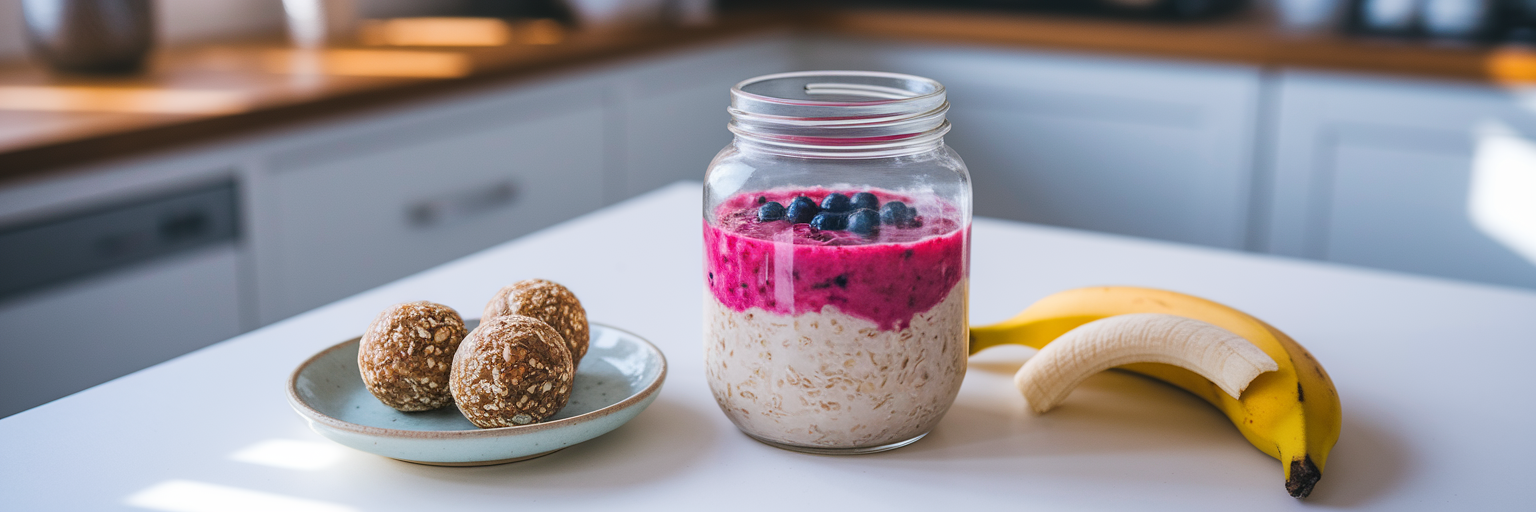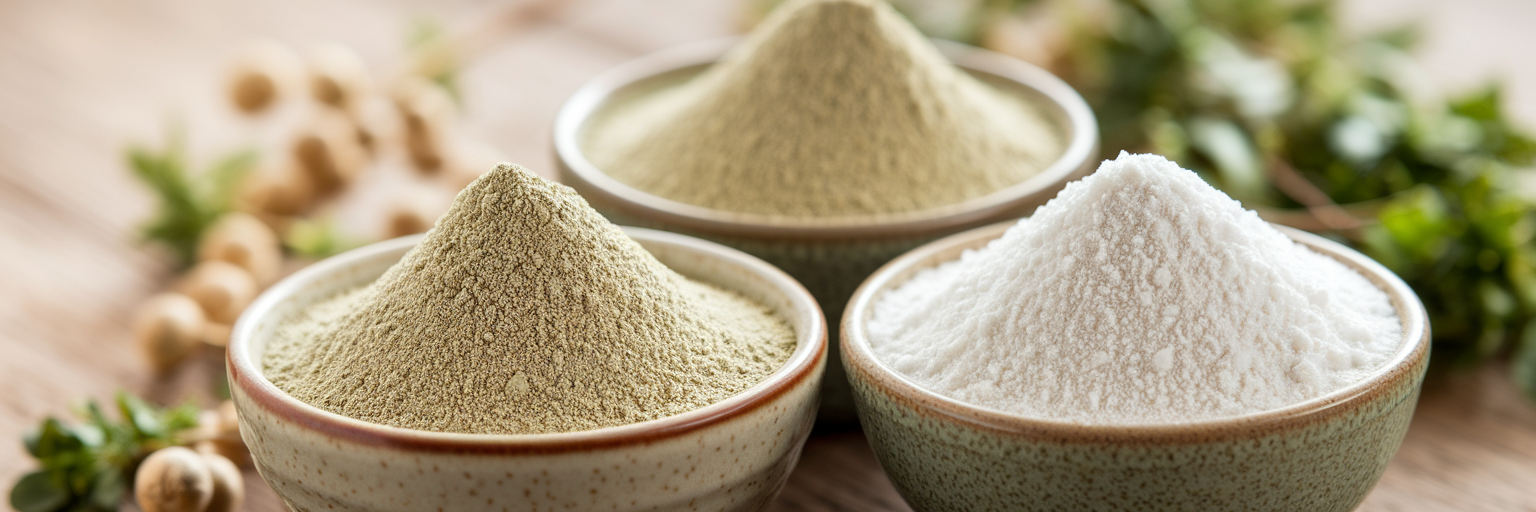Getting Started with Gentle Protein Meal Prep
You've stocked up on vegan protein powder, ready to support your fitness goals and busy lifestyle, but your stomach seems to have other plans. If you've ever felt that familiar, uncomfortable bloat after a protein shake, you are definitely not alone. It’s a common frustration that can make you question if the benefits are even worth the discomfort. But what if you could get all the goodness of plant-based protein without the digestive drama?
This guide is here to show you exactly how to use vegan protein powder in a way that feels good. We’ll walk through simple, actionable strategies to help you incorporate it into your meal prep comfortably and effectively. Think of this as a personal journey of discovery. It’s about listening to your body, making small adjustments, and finding what truly works for you. Forget the one-size-fits-all advice. Let’s find a gentle approach that leaves you feeling energized, not overstuffed.
Understanding Why Vegan Protein Can Cause Discomfort

Before we can fix the problem, it helps to understand what might be causing it. That feeling of fullness or bloating isn't just in your head. It often comes down to a few key factors hidden within the protein powder itself. Becoming a bit of a label detective is the first step to finding a powder your gut will love.
The Fiber Factor
Plant-based proteins are naturally rich in fiber. While fiber is fantastic for long-term gut health, a sudden, concentrated dose can be a shock to your system if it’s not used to it. Think of it like asking your digestive tract to go from a leisurely walk to a full sprint without a warmup. This rapid increase can lead to gas and bloating as your gut bacteria work overtime to break it all down.
Hidden Triggers: Additives and Sweeteners
Many protein powders contain more than just protein. Gums like xanthan gum are often added for a thicker texture, and sugar alcohols like erythritol or xylitol are used to add sweetness without calories. For some people, these ingredients can be difficult to digest and may draw water into the intestine, causing discomfort. If you're curious about specific ingredients, our frequently asked questions page offers more insight into product formulations.
Personal Protein Sensitivities
Not all plant proteins are created equal, and neither are our digestive systems. You might find that pea protein sits perfectly well, while soy protein causes issues, or vice versa. This is completely normal. Research published in the Journal of Nutrition confirms that different plant proteins have varying digestion rates. Understanding your personal tolerance is key to finding an easy to digest vegan protein and learning how to avoid bloating with protein powder for good.
Smart Ways to Add Protein Powder to Meals
One of the biggest mistakes people make is chugging a concentrated protein shake on an empty stomach. A much gentler approach is to integrate the powder into whole foods. This slows down digestion and gives your body more time to process everything. Here are a few simple vegan protein meal prep ideas that can make a world of difference.
- Blend It into Smoothies and Bowls: This is a classic for a reason. When you blend protein powder with fruits like banana, leafy greens like spinach, and a source of healthy fat like avocado or chia seeds, you create a balanced meal. The other ingredients act as a buffer, making the protein much easier on your stomach.
- Soak It in Overnight Oats and Chia Puddings: Mixing your protein powder into oats or chia pudding the night before is a brilliant move. This gives the powder time to fully dissolve and hydrate, which not only improves the texture but also makes it significantly easier for your body to absorb without any gritty surprises.
- Bake or Mix It into Snacks: Who said protein powder is just for drinks? Incorporating it into recipes for energy bites, muffins, or even pancakes is a fantastic way to boost your protein intake. When the powder is distributed throughout a food matrix, it prevents a large, concentrated dose from hitting your stomach all at once. If you're looking for inspiration, we've shared some of our favorite plant based protein recipes that are both delicious and digestion-friendly.
By shifting from concentrated shakes to integrated meals, you give your digestive system the support it needs to do its job without protest.
Mastering Portion Control and Meal Timing

Beyond what you eat and how you prepare it, the "when" and "how much" are just as important for digestive harmony. It’s easy to assume that more protein is always better, but your body can only handle so much at one time. Adopting a mindful strategy for portioning and timing can be a true turning point.
Finding Your Sweet Spot: The Right Portion Size
Most protein powders suggest a serving size of one scoop, which typically provides 20-30 grams of protein. For most people, this is the sweet spot. Going for a double scoop might seem like a good idea for hitting your macros, but it can easily overwhelm your digestive system. If you’re new to protein powder or have a sensitive stomach, start with half a scoop and gradually work your way up as your body adjusts.
Spreading It Out for Better Digestion
Instead of consuming a large amount of protein in one sitting, try distributing your intake throughout the day. Having a smaller amount of protein with breakfast, another portion in a post-workout snack, and more with your dinner is much gentler on your gut. This steady supply is easier to digest and can also help keep your energy levels stable.
Timing for Peak Performance and Recovery
While you can enjoy protein anytime, there is a window where it can be particularly effective. The best time to take protein powder for muscle repair is often within 30 to 60 minutes after a workout. During this period, your muscles are primed to absorb nutrients to rebuild and recover. Pairing your protein with a carbohydrate source can enhance this process even further. This strategic timing also supports other aspects of recovery, which is why many people explore supplements that work in tandem, like those detailed in our guide to the benefits of creatine monohydrate.
Choosing a Digestion-Friendly Vegan Protein Powder
With so many options on the shelf, picking the right powder can feel overwhelming. But now that you know the common culprits behind digestive discomfort, you can shop with confidence. Here’s what to look for to find a powder that works with your body, not against it.
- Look for multi-source blends: Powders that combine several types of plant protein, such as pea, rice, and pumpkin seed, often provide a more complete amino acid profile and can be easier on the gut than a single-source protein.
- Seek out added digestive enzymes: Some high-quality powders include digestive enzymes like protease and amylase. These are added specifically to help your body break down the protein and carbohydrates more efficiently, which can significantly reduce bloating.
- Read the ingredient list carefully: A shorter, cleaner label is almost always better. Look for powders with minimal fillers, gums, or artificial sweeteners. As users on platforms like Reddit's r/veganfitness often discuss, simple formulas tend to cause fewer issues.
- Start simple: If you're unsure what works for you, try an unflavored protein powder first. This allows you to establish a baseline tolerance without any extra variables. Once you know the base protein agrees with you, you can explore flavored options like our Beyond Good Foods Chocolate Vegan Protein, which is designed with a clean, simple ingredient list in mind.
| Protein Source | Key Benefit | Digestibility Factor | Best For |
|---|---|---|---|
| Pea Protein | Rich in iron & BCAAs | Generally easy to digest | Post-workout shakes, smoothies |
| Rice Protein | Hypoallergenic | Very gentle on the stomach | Sensitive individuals, baking |
| Hemp Protein | High in fiber & omega-3s | Fiber can be heavy for some | Adding fiber and nutrients to meals |
| Soy Protein | Complete amino acid profile | Can be a common allergen | Building muscle (if tolerated well) |
Note: This table provides a general overview. Individual tolerance can vary, so personal experimentation is key to finding the best fit for your body.
Putting It All Together with Simple Recipe Formulas
Now it’s time to put all this knowledge into practice! The key to long-term success is to keep things simple and delicious. Instead of rigid recipes, think in terms of flexible formulas you can adapt based on what you have on hand. Here are three easy, gut-friendly templates to get you started on your own plant based protein recipes.
- Happy Gut Smoothie Formula: 1 cup plant milk + 1 scoop protein powder + 1/2 frozen banana + 1 handful spinach + 1 tbsp chia seeds. Blend until smooth. The banana adds creaminess, the spinach is virtually tasteless, and the chia seeds provide healthy fats to aid digestion.
- Overnight Power Oats Formula: 1/2 cup rolled oats + 1 scoop protein powder + 1 cup plant milk + 1 tbsp maple syrup (optional). Mix everything in a jar, seal it, and refrigerate overnight. In the morning, you’ll have a creamy, protein-packed breakfast ready to go.
- No-Fuss Energy Bites Formula: 1 cup rolled oats + 1/2 cup nut butter + 1/4 cup protein powder + 2 tbsp liquid sweetener (like maple syrup or agave). Mix all ingredients in a bowl until a dough forms, then roll into bite-sized balls. It’s the perfect grab-and-go snack.
Use these formulas as your starting point and feel free to get creative. Try different fruits in your smoothie or add nuts to your energy bites. The goal is to build healthy habits that stick. For more ideas on finding the right powder for your goals, explore our guide to the best protein powders.



